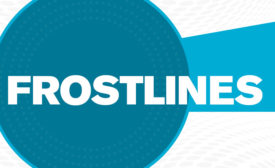Refrigeration
Company moves ahead with its transformation plan
Read More
HARDI Joins the North American Sustainable Refrigeration Council
Distributor group supports use of alternative refrigerants
May 27, 2016
DeCicco & Sons Earns GreenChill Award for Eco-Friendly Store
Store installed a Hillphoenix Advansor CO2 Booster System that utilizes CO2 refrigerant
May 26, 2016
Bitzer’s Schaufler Academy receives Deutscher TGA-Award
Training center recognized for its exceptional efficiency and eco-friendly design
May 17, 2016
ATMOsphere America Conference Coming to Chicago in June
Natural refrigerants event expected to be biggest ever
May 16, 2016
Commercial Refrigeration Market to Reach $41.5 Billion by 2022
Reach-in and walk-in systems accounted for the largest revenue share and they are expected to see promising growth
May 16, 2016
Copyright ©2025. All Rights Reserved BNP Media.
Design, CMS, Hosting & Web Development :: ePublishing



